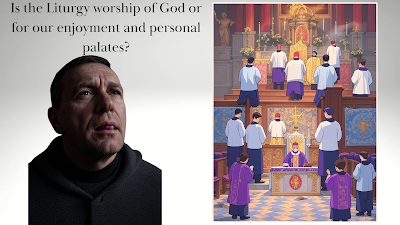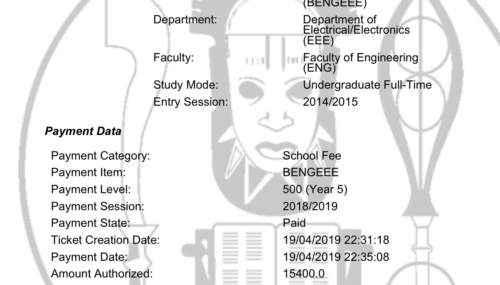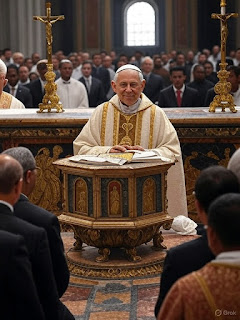Worship of God, Not a Personal Palette For Your Palate

The Sacred Liturgy: Worship of God, Not a Personal Palette
The Catholic liturgy, particularly the Holy Mass, is the pinnacle of the Church’s life, a sacred act of worship offered to God. It is not a human construct subject to personal tastes or preferences, nor is it a playground for individual creativity or selective participation. The liturgy is latria—the worship due to God alone—and its essence lies in its divine orientation, not in catering to our subjective desires. To treat the liturgy as a menu of choices, where one picks and chooses based on personal preferences for language, music, vestments, or priestly style, risks reducing the sacred to the profane, turning worship into a consumerist exercise. This blog post argues, with support from authoritative Catholic sources, that the liturgy is solely the worship of God, and Catholics must approach it with reverence for Christ’s presence in the Eucharist and the Word, not as a matter of personal taste akin to choosing a favorite sports team or ice cream flavor.
The Nature of the Liturgy: Latria, Not Personal Preference
The Catholic Church teaches that the liturgy is the public worship of God, instituted by Christ and entrusted to the Church to be safeguarded and celebrated according to His will. The Catechism of the Catholic Church (CCC) defines the liturgy as “the participation of the People of God in ‘the work of God’” (CCC 1069). It is an act of latria, the highest form of worship reserved for God alone, distinct from dulia (veneration of saints) or hyperdulia (veneration of Mary). The Second Vatican Council’s Constitution on the Sacred Liturgy, Sacrosanctum Concilium (1963), emphasizes that the liturgy is “a sacred action surpassing all others” (no. 7), where Christ is present in the Eucharist, the Word, the priest, and the assembly, uniting the Church in worship.
This divine orientation means the liturgy is not about us—it is about God. Pope Benedict XVI, in his apostolic exhortation Sacramentum Caritatis (2007), underscores this: “The liturgy is not something we invent or adapt according to our own tastes or creativity; it is a gift received from Christ through the Church, a living tradition that expresses the faith of the Church” (no. 38). To approach the liturgy as a matter of personal preference—whether favoring the Extraordinary Form (Traditional Latin Mass) or the Ordinary Form (Novus Ordo), Latin or vernacular, ornate vestments or simple ones, a “funny” priest or a serious one—shifts the focus from God to ourselves. It risks turning the liturgy into a performance or a product, akin to choosing vanilla over chocolate ice cream or the Yankees over the Red Sox.
The Danger of Consumerism in Worship
When Catholics say, “I prefer the Extraordinary Form because of its reverence” or “I like the Ordinary Form because it’s more accessible,” they may inadvertently reduce the liturgy to a matter of taste. This mindset mirrors the consumerism of modern culture, where personal satisfaction dictates choices. The liturgy, however, is not a commodity. As Cardinal Robert Sarah, former Prefect of the Congregation for Divine Worship, writes in The Power of Silence (2016), “The liturgy is not a playground for theological experimentation or a stage for personal creativity. It is God’s work, not man’s, and it demands our reverence and fidelity” (p. 112). Choosing a Mass based on its rite, language, music, or priestly demeanor suggests that the liturgy’s value lies in its appeal to us, not in its objective purpose: the worship of God through Christ’s sacrifice.
This consumerist approach echoes the error of the Pharisees, who, as Jesus critiqued, prioritized external rituals and legalistic observance over the spirit of the law and true worship (cf. Matthew 23:23-28). The Pharisees’ focus on the minutiae of the law—rituals, fasting, and outward displays—obscured their encounter with God. Similarly, when Catholics fixate on the “style” of the liturgy, they risk making the rite itself the object of devotion, rather than Jesus Christ, who is the heart of the liturgy. As Pope John Paul II warned in Dominicae Cenae (1980), “The liturgy is not a matter of personal taste or a means of self-expression. It is the Church’s way of offering fitting worship to God, rooted in tradition and fidelity to the mystery of Christ” (no. 12).
The Unity of the Eucharist Across Rites
The Catholic Church recognizes both the Extraordinary Form and the Ordinary Form as valid expressions of the one Eucharistic sacrifice. Pope Benedict XVI, in his 2007 motu proprio Summorum Pontificum, clarified that these two forms are “two usages of the one Roman rite” (Art. 1). To prefer one over the other as a matter of taste undermines the unity of the Church’s worship. The Eucharist—Christ’s real presence—is the same in both forms, whether celebrated in Latin, Spanish, English, or any language, with chant or contemporary music, in ornate or simple vestments. A Catholic’s participation in the liturgy should be motivated by the desire to encounter Christ in the Word and the Eucharist, not by an attachment to a particular rite or aesthetic.
The Catechism teaches that the Eucharist is “the source and summit of the Christian life” (CCC 1324). This truth transcends personal preferences. A Catholic who attends Mass only when it aligns with their preferred style risks missing the point of the liturgy: to worship God and receive His grace. As St. Paul exhorts, “Whatever you do, do everything for the glory of God” (1 Corinthians 10:31). The true Catholic approaches any valid Mass with the same reverence, recognizing that Christ is present, regardless of the external form.
The Church’s Authority Over the Liturgy
The liturgy is not ours to manipulate or tailor to our liking. The Church, as the guardian of the liturgy, regulates its celebration to ensure it remains a true act of worship. Sacrosanctum Concilium states, “Regulation of the sacred liturgy depends solely on the authority of the Church… No other person, even if he be a priest, may add, remove, or change anything in the liturgy on his own authority” (no. 22). This authority safeguards the liturgy from becoming a reflection of individual or cultural preferences.
Historically, attempts to “personalize” the liturgy have led to abuses. For example, in the post-Vatican II era, some priests and communities introduced unauthorized innovations—such as substituting secular music for sacred hymns or altering liturgical texts—to make the Mass “more appealing.” Such actions, as Pope St. Pius X warned in Tra le Sollecitudini (1903), distort the liturgy’s purpose: “The liturgy is not the expression of personal feelings or tastes, but the worship rendered to God by the Church in union with Christ, her Head” (no. 3). When Catholics prioritize their preferences—whether for a specific rite, language, or style—they implicitly challenge the Church’s authority and risk making the liturgy “their thing” rather than God’s.
The Call to Humility and Obedience
A holy Catholic approaches the liturgy with humility and obedience, subordinating personal tastes to the Church’s wisdom. This requires a shift from a self-centered mindset to a God-centered one. As Jesus taught, “Whoever wishes to come after me must deny himself, take up his cross, and follow me” (Matthew 16:24). Attending a Mass that may not align with one’s aesthetic preferences—whether due to the language, music, or priest’s demeanor—can be an act of spiritual discipline, a way of dying to self and offering worship purely for God’s glory.
This humility is exemplified by the saints. St. Thérèse of Lisieux, for instance, embraced the simplicity of her convent’s liturgy, despite its lack of grandeur, because her focus was on Christ, not the external trappings. Similarly, St. John Vianney, the Curé of Ars, celebrated the Mass with profound reverence, regardless of the setting, because he saw it as an encounter with Christ. Their example challenges modern Catholics to transcend preferences and focus on the Eucharist as the heart of worship.
Conclusion: Worshiping Christ, Not the Rite
The liturgy is not a buffet where we pick and choose based on our tastes. It is not a performance to entertain us or a platform for self-expression. It is latria—the worship of God through the sacrifice of Christ, made present in the Eucharist and the Word. When Catholics approach the liturgy with a consumerist mindset, favoring one rite over another or attending Mass only when it suits their preferences, they risk echoing the Pharisees’ error: prioritizing ritual over the living God. A true Catholic attends any valid Mass, whether Extraordinary or Ordinary Form, in Latin or the vernacular, with ornate or simple vestments, because the focus is on encountering Jesus Christ, not on satisfying personal tastes.
As Cardinal Sarah reminds us, “The liturgy is not about us, but about God” (God or Nothing, 2015, p. 166). Let us approach the Mass with reverence, humility, and obedience, recognizing it as the worship of God, not a reflection of our personal palette. By doing so, we honor Christ’s presence in the Eucharist and fulfill the true purpose of the liturgy: to give glory to God.
The Mass or Sacred Liturgy in general is not about “different strokes for different folks.” It is about the worship of the One and Only God, Father, Son, and Holy Spirit. If you go to Mass for the rite, the music, the priest’s “style,” vestments, architecture, furniture, Latin, or to meet girls or guys, then you are in the wrong religion. You need to go do something else or condemn your soul to life in hell.
Sources Cited:
-
Catechism of the Catholic Church. 2nd ed., Libreria Editrice Vaticana, 1997.
-
Second Vatican Council. Sacrosanctum Concilium. 1963.
-
Pope Benedict XVI. Sacramentum Caritatis. 2007.
-
Pope Benedict XVI. Summorum Pontificum. 2007.
-
Cardinal Robert Sarah. The Power of Silence: Against the Dictatorship of Noise. Ignatius Press, 2016.
-
Cardinal Robert Sarah. God or Nothing: A Conversation on Faith. Ignatius Press, 2015.
-
Pope John Paul II. Dominicae Cenae. 1980.
-
Pope St. Pius X. Tra le Sollecitudini. 1903.
-
Holy Bible, New American Bible, Revised Edition.
For further reading, see the Vatican’s Instruction on Certain Questions Regarding the Collaboration of the Non-Ordained Faithful in the Sacred Ministry of Priests (1997) and Redemptionis Sacramentum (2004) for guidelines on maintaining the integrity of the liturgy.
Here are some Catholic quotes emphasizing that the liturgy is not for human whims, a playground, or based on personal tastes, but is instead a sacred act of worship rooted in divine order:
-
Pope St. Pius X, Tra le Sollecitudini (1903):
“The liturgy is not the expression of personal feelings or tastes, but the worship rendered to God by the Church in union with Christ, her Head. It is not a private act but a public and sacred one, regulated by the Church’s authority.”
-
Second Vatican Council, Sacrosanctum Concilium (1963), no. 22:
“Regulation of the sacred liturgy depends solely on the authority of the Church… No other person, even if he be a priest, may add, remove, or change anything in the liturgy on his own authority.”
-
Pope Benedict XVI, Sacramentum Caritatis (2007), no. 38:
“The liturgy is not something we invent or adapt according to our own tastes or creativity; it is a gift received from Christ through the Church, a living tradition that expresses the faith of the Church.”
-
Cardinal Robert Sarah, The Power of Silence (2016):
“The liturgy is not a playground for theological experimentation or a stage for personal creativity. It is God’s work, not man’s, and it demands our reverence and fidelity.”
-
Pope John Paul II, Dominicae Cenae (1980), no. 12:
“The liturgy is not a matter of personal taste or a means of self-expression. It is the Church’s way of offering fitting worship to God, rooted in tradition and fidelity to the mystery of Christ.”
These quotes underscore the Catholic teaching that the liturgy is a sacred, divinely instituted act, not subject to personal whims or individual preferences.














Leave feedback about this